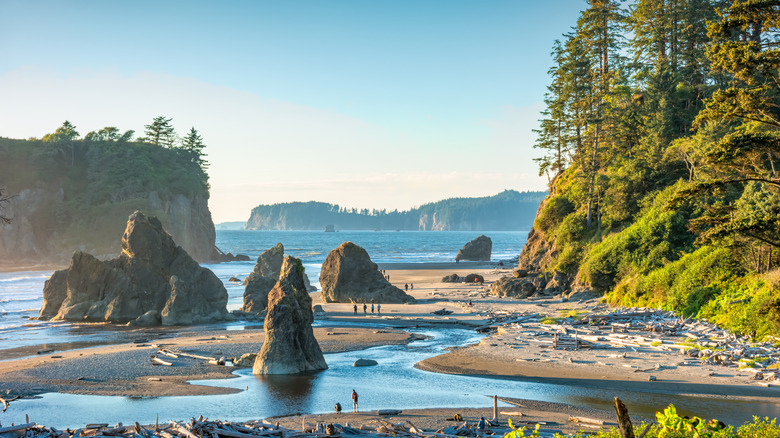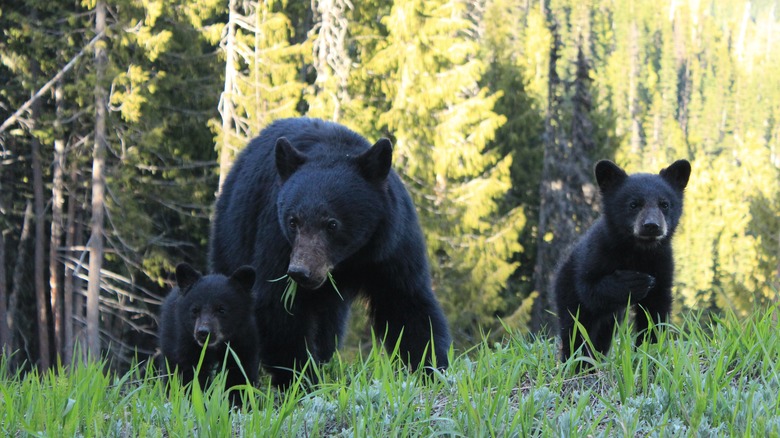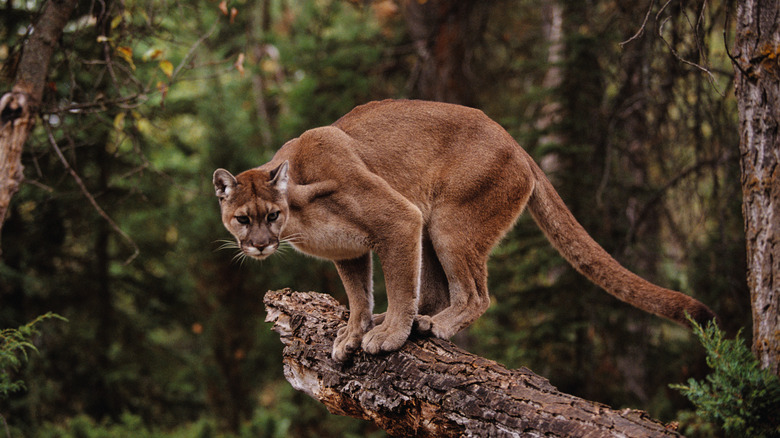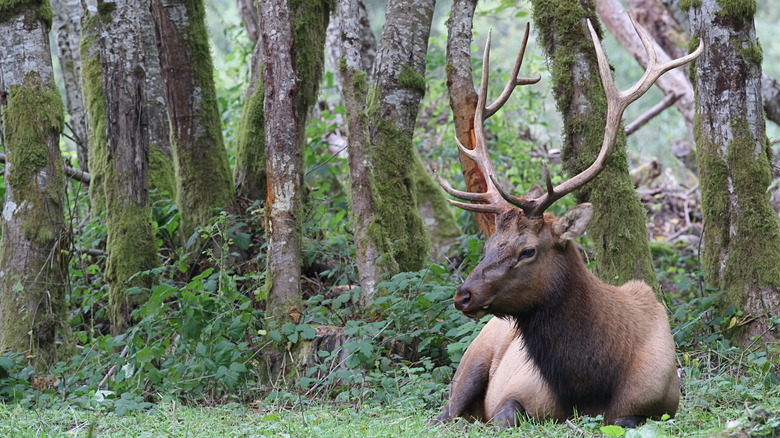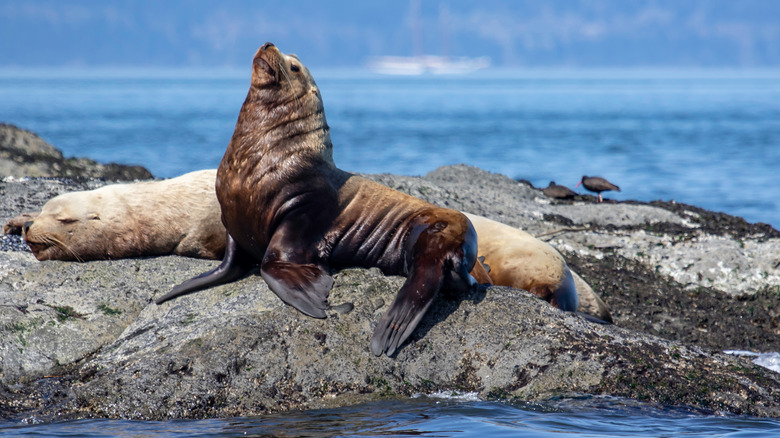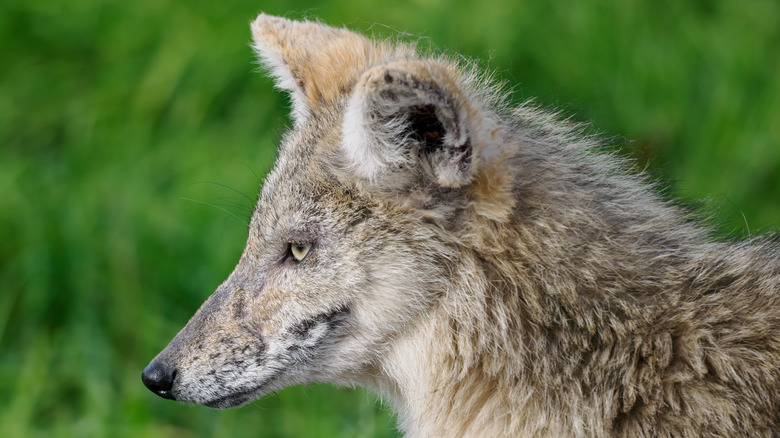5 Creatures To Beware Of When Adventuring In Olympic National Park
Olympic National Park, a million-acre chunk of the extreme northwest corner of Washington state, is considered one of the most scenic locations in the national park system. Together with the adjacent Olympic National Forest, it covers the majority of the Olympic Peninsula. It is also one of the more diverse national parks, offering seashore, old growth forest, mountains, temperate rainforest, rivers, and glacial lakes. Olympic National Park features a wide array of outdoor activities, too. It is considered one of the best national parks for fishing as well as one of the top spots for camping, particularly during the fall season.
Given the broad array of ecosystems and natural features, it is no surprise there is also a tremendous diversity of animal life within Olympic National Park. These elements combine to afford outdoor enthusiasts ample opportunities for epic excursions. However, there are some creatures to beware of when adventuring in Olympic National Park.
Black bears are common in Olympic National Park
Though they are more timid than the infamous grizzly, black bears are nonetheless a dangerous type of bear. They are common sights within Olympic National Park. Given there are currently around 25,000 black bears in Washington, it is important to understand bear behavior so as to avoid attracting bears to campsites when overnighting in the park. Anyone adventuring in Olympic National Park should consider carrying bear spray mandatory.
Although violent interactions are rare, it is important to know what to do if attacked by a bear and how to avoid such a negative encounter. The standard bear safety protocol applies anytime you are in bear territory, such as on the Olympic Peninsula. That means letting your presence be known by making noise as you hike, keeping pets on a leash, storing food in airtight containers away from tents, cooking away from tents, traveling in groups, and not entering areas where bears are known to be feeding.
If you encounter a bear, the National Park Service has a few steps to follow to avoid an attack. First and foremost, stay calm, even if the bear bluff charges, and do not run. Pick up any small children or pets and do your best to appear larger –- stand on a rock, raise your arms above your head, etc. Slowly begin moving out of the area while maintaining eye contact with the bear and taking care not to come between the bear and cubs, if present.
Cougars can pose a threat
Cougars, also known as mountain lions, are very large cats –- capable of exceeding 100 pounds in weight. Presently, there is a healthy population of these feral felines in Washington of around 2,000, and they freely roam throughout Olympic National Park. It is quite common for visitors to encounter cougars and the park service requests all sightings to be reported. However, before getting to the point of reporting a sighting, you must be prepared to know what to do if you see a mountain lion while adventuring in cougar country.
Whenever you are recreating in Olympic National Park –- hiking, jogging, mountain biking, camping – the primary way to stay safe from cougars is to be well aware of your surroundings, always move with a partner or in a group, and be on the lookout for signs a mountain lion may be in the area. Make noise as you move through the forest or along a trail to alert the cats to your presence – they will typically move off before you see them. Keep small children close and do not let them run ahead. If you happen to have a pet, keep it leashed. Never approach any dead animals you may encounter, as cougars may be attracted to them. If camping, keep your campsite clean and food stored in airtight containers away from sleeping areas. If you do see a cougar, stay calm, wave your arms overhead, and back away. If it attacks, fight back.
Elk can harm humans
Roosevelt elk, the subspecies of North American elk that inhabits Olympic National Park, are massive and majestic. They are capable of attaining a shoulder height of over five feet and reaching weights exceeding 1,000 pounds. Mature males exhibit impressive antlers. The herd inhabiting Olympic National Park is the largest unmanaged elk herd in this region of the United States. Numbering some 5,000 animals, it is also the largest herd of the Roosevelt subspecies known to exist. Given the number of elk living within the park, sightings are fairly common. Typically, these encounters are peaceful. Elk tend to leave humans alone as long as they don't feel threatened. However, they can kick, trample, head-butt, or gore people if they feel threatened. Recent years have seen a number of such incidents, including a woman being trampled to death in Arizona and a man being gored in Colorado.
Staying safe around elk mainly requires giving them plenty of room, maintaining a safe distance, and not making the animal feel pressured or confined. Guidelines at Olympic National Park require visitors to stay at least 75 feet away from elk. You should never attempt to approach, pet, or feed an elk. It is also important to be aware of signs the elk may be getting agitated. These include the animal snorting, grinding its teeth, or laying its ears flat behind its head. If you notice any of these warning signs, slowly move away while keeping your eyes on the animal.
Seals and sea lions can inflict serious injuries
Those adventuring along the 70-plus miles of Pacific Ocean coastline found within Olympic National Park will need to beware of a pair of other creatures. Actually, they need to beware of a pair of pairs, as the park is home to two types of seals –- harbor and northern fur -– and two types of sea lion – California and Steller's. Of these, the harbor seal is the most common, while the Steller's sea lion, which can weigh as much as 2,000 pounds, is the largest. Each of these animals is known to be relatively peaceful. However, both seals and sea lions can also react aggressively in certain situations and are more than capable of inflicting severe injuries.
The best way to avoid a violent encounter with either a seal or a sea lion is to observe them from a distance. You should never try to approach, pet, handle, or feed a seal or sea lion. Be sure to keep pets on leashes and do not allow them to approach a seal or sea lion, either. This will not only keep you and the animal safe, but will also ensure you don't violate the Marine Mammal Protection Act, which protects both of these species.
Coyotes can be concerning
Although there are more than three dozen wolf packs known to inhabit Washington state, over time they have been extirpated from the Olympic Peninsula and Olympic National Park. However, as has been the case across the United States, as the wolf population declined, another predatory canine, the coyote, became moving into its historic range. Thus, while today there are no wolves to be found in Olympic National Park, coyotes are quite common.
Given the high numbers of coyotes in the park, before setting out on an adventure, make sure you know what to do if you come across a coyote on a hike. If you plan to overnight, you need to be familiar with how to protect your campsite from coyotes. Since they are typically skittish, the common advice given if a coyote is seen on the trail or near a campsite is to heckle and harass them by making noise and throwing objects towards (not at) them. Known as coyote hazing, these non-lethal deterrents typically send a coyote scurrying. If it does not, continue the hazing tactics, maintain eye contact with the animal, and move away from the area. The best way to make sure your campsite isn't inviting to a coyote is to keep it clean and tidy and make sure all food is stored in airtight containers. Additionally, make sure all pets remained leashed and close to you at all times
